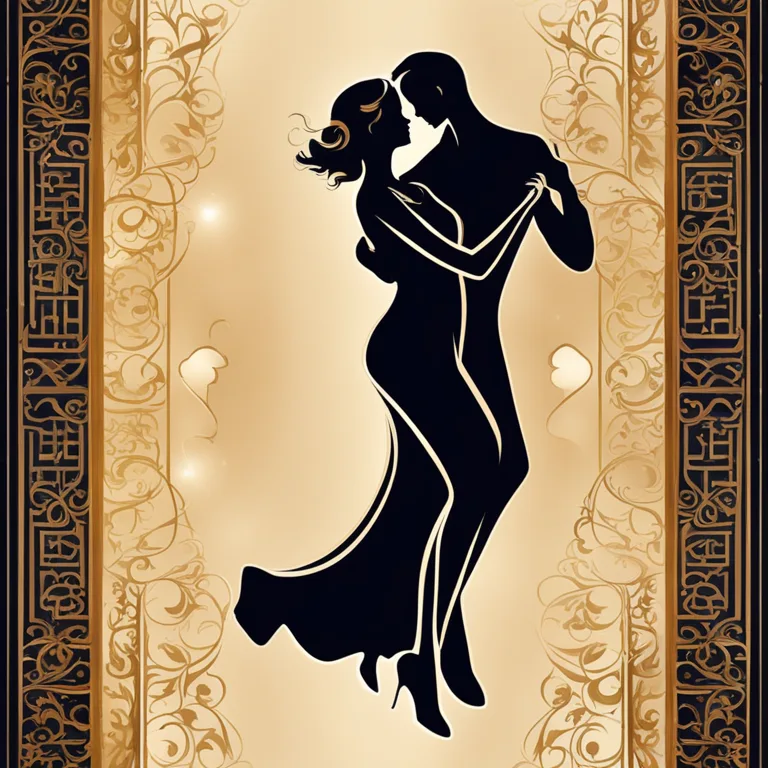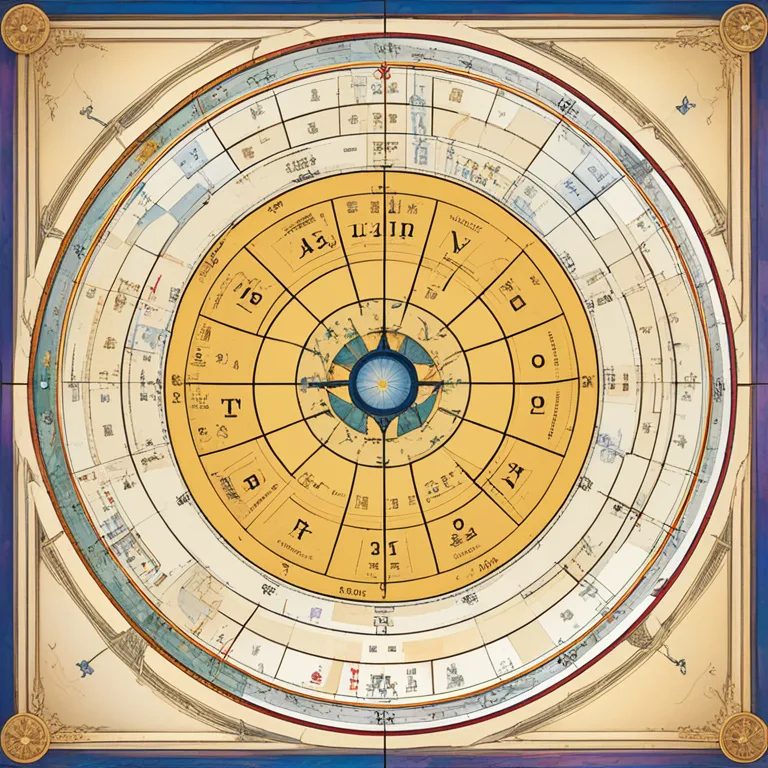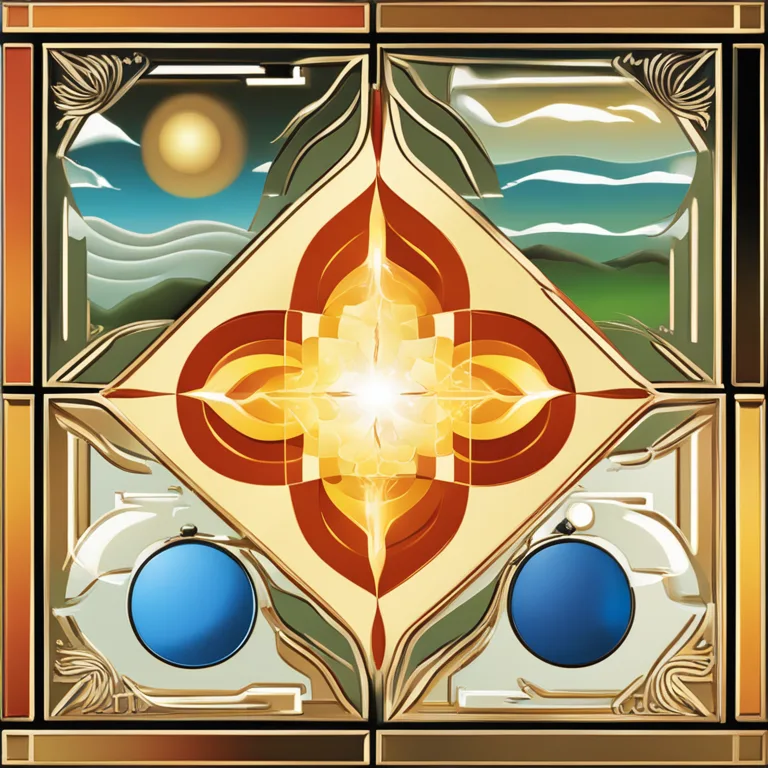
The Synastry Of Birth Charts
Delve into the intricate dance of compatibility through the lens of natal astrology to discover how celestial alignments at birth influence relational dynamics.
article by Sofia Ferguson
Introduction to Natal Compatibility
In the world of astrology, the concept of natal compatibility—commonly known as synastry—is a fascinating study of how individuals mesh and interweave their destinies based on their birth charts. The celestial tapestry at the time of someone's birth can reveal an array of potential connections, challenges, and growth opportunities when closely analyzed alongside another's chart. The positions of the planets, the sun, and the moon, as well as the astrological houses and aspects they form, all contribute to this astrological art form. As we venture further into 2024 and embrace its astrological nuances, natal compatibility readings continue to gain popularity among those seeking deeper relational insights.

Elements and Modalities
To grasp the essence of compatibility, it's essential to understand the four elements (Fire, Earth, Air, Water) and the three modalities (Cardinal, Fixed, Mutable) that each zodiac sign is associated with. These fundamental traits describe core energies and tendencies—Fire signs brim with passion, Earth signs seek stability, Air signs cherish communication, and Water signs delve into emotions. The modalities outline how these signs express their energy: Cardinal signs initiate, Fixed signs endure, and Mutable signs adapt. Evaluating the balance and clash of elements and modalities between two charts is pivotal for deciphering compatibility, spotlighting how two individuals may harmonize or contend with each other's intrinsic nature.

The Role of the Sun and Moon
The Sun sign symbolizes one's essence, life force, and identity, while the Moon sign underscores one's emotional landscape and inner self. A harmonious aspect between two individuals' Sun and Moon signs might indicate a profound connection, where each person feels heard and validated by the other. However, challenging aspects may hint at potential areas of friction to overcome. In the context of natal compatibility, it is these illuminating relationships between suns and moons that often guide astrologers in revealing the basic framework for how individuals might interact on both egoic and emotional levels.

Venus and Mars: Love and Desire
When delving into relational astrology, Venus and Mars assume critical roles in illustrating love styles and sexual compatibilities. Venus, the planet of love and harmony, governs what we value and how we relate, while Mars, representing desire and action, controls how we chase what we want. The dance between Venus and Mars across two charts unravels the nuances of attraction and partnership, often laying bare the potential for magnetic attraction or, conversely, discordant passions. Compatibility assessments routinely consider these planets to derive insights into the romantic and physical bonds between people.

Mercury and Communication
Communication stands as the bedrock of any successful relationship, and Mercury's placement gives clues to an individual's communicative style—a vital component of compatibility. From articulate Mercurial air signs to the grounded expressions of earthy Mercuries, understanding how two partners converse, share ideas, and resolve conflict can offer a revealing glimpse into their potential for understanding one another. As we move beyond old stereotypes in astrology, the analysis of Mercury's position further deepens the understanding of how partners can navigate their relational journey.
The Influence of Outer Planets
Long-term compatibility can be significantly informed by the outer planets—Jupiter, Saturn, Uranus, Neptune, and Pluto—as their transits trigger transformative events and outlook shifts in lives. Couples might face tests of endurance from Saturn lessons or expansive growth under Jupiter's benevolent gaze. The generational planets—Uranus, Neptune, and Pluto—can indicate collective experiences that shape a couple's dynamic with broad societal themes. Grasping the impact of these slower-moving celestial bodies on both natal charts can forecast the evolution of the relationship through the times.
Accuracy and the Evolving Self
As astrology looks to the future, the accuracy of birth times becomes significantly more critical in compatibility analyses. In the precise cosmic language of astrology, even a few minutes can alter the angular positioning of the chart. Modern astrologers now emphasize the importance of this data for nuanced interpretations. Moreover, as individuals grow and experience life, their expression of natal potentials can evolve. Astrology is not deterministic; it serves as a guide for understanding inherent proclivities and the diverse ways they might unfold within relationships.
Published: 12/18/2023
Modified: 12/18/2023
More predictions
Come back here soon to learn more about yourself and your future


Love's Potential & Birthdate Compatibility
Discover how your birthdate influences romantic compatibility with our insightful guide on date-of-birth-based love matching.


Compatibility Insights: Are We Matched?
Discover the depths of your compatibility with astrology, palmistry, and more in our insightful guide.


Discover Your Match: Birthday Compatibility
Unveil the secrets of birthday compatibility and find out how well you mesh with others based on astrological insights.